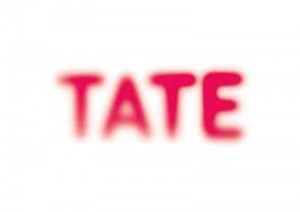For the last meeting of Tate trustees of which minutes have been posted on line (i.e. September 2012), only six of fourteen members bothered to show up. Perhaps it was raining. Trustees, you won’t need reminding, are there to oversee the vigilant running of quangos to ensure public interest is looked after. This is important when the Tate costs taxpayers at least £33 million a year in subsidy. You may be forgiven for believing that the trustees report to the Tate director. In fact, it’s the other war round; the director is – in theory – employed by the trustees and is responsible for implementing their sanctions.
 Trustees were in such short supply at the September confab they were outnumbered by Tate directors, eight of whom attended – incredibly, the Tate now has more directors than trustees, seventeen in total. Two of the three artist trustees failed to attend; in fact, at only one meeting in the previous year have all three artist trustees managed to be present at the same time, which is not surprising given that two of them, for reasons doubtless very convenient to Serota, are German. Magazine snapper Wolfgang Tillmans’s record is especially woeful: on average he attends every other meeting.
Trustees were in such short supply at the September confab they were outnumbered by Tate directors, eight of whom attended – incredibly, the Tate now has more directors than trustees, seventeen in total. Two of the three artist trustees failed to attend; in fact, at only one meeting in the previous year have all three artist trustees managed to be present at the same time, which is not surprising given that two of them, for reasons doubtless very convenient to Serota, are German. Magazine snapper Wolfgang Tillmans’s record is especially woeful: on average he attends every other meeting.
Such lack of commitment is unacceptable in a body that effectively runs contemporary art. Trustees should take their jobs more seriously. Attendance ought to be obligatory not voluntary. After all, an afternoon every two months isn’t so arduous. If MPs have to be rolled in half dead on gurneys to vote, so should Tate trustees. This is an important public duty which many might consider a privilege, so if a candidate under nomination can’t give an assurance of attendance then others should be appointed who are prepared to commit themselves enthusiastically to the unpaid effort involved.
Poor attendance by artist trustees, especially the Germans, highlights the error of appointing foreigners in the first place. Why weren’t British artists appointed? No, seriously, why weren’t they? Surely some can be found who are subservient enough to the President-For-Life not to preclude their consideration. Germans generally are more inventive, harder working, less squalidly materialistic and better educated than we are, but how can they be expected to feel and understand the historical significance of the Tate in British art life? Foreign artists should not be made Tate trustees because we have sufficient intelligent and independently minded candidates of our own. Naturally, it is very handy for the PFL to have a board of indifferent lackeys who will rubber stamp whatever he wants. After all, the process by which they were all vetted in the first place is controlled from his office. Officially, trustees are appointed by the Prime Minister but unofficially we all know they are chosen by him; his mucky fingerprints can be found over the whole process. (See The Jackdaw’s former investigation of Tate trustees on our website).
No wonder the trustees have lost control of the Tate when they can’t even be bothered to show up to their infrequent meetings. For example, how could they have allowed building work to start on a Tate Modern extension when such a small percentage – under a quarter – of the required funds had been raised? This was surely irresponsible, with the result that this annexe is squaring up to be the longest building project in British construction history. They could have built five Shards in the time it’s so far taken to erect the shanty arrangement of concrete slabs behind the Turbine Hall – currently being augmented, on visual evidence, at the industrious rate of one breezeblock a week. As it is, trustees have had to loot endowments given to the Tate for other purposes in order to maintain even this pathetic semblance of progress on the site.
And finally, a snippet of late news to please trustee Herr Tillmans. Glasgow Art Gallery has just purchased two bog standard snaps by him. This adds to the 63 Tillmans held by the Tate, 9 by the Arts Council and 11 by the British Council. Of these 82 only two are currently on display, at Tate Britain. Why didn’t Glasgow save themselves scarce cash and borrow the 80 pictures expensively stored by the other three public collections?
David Lee
The Jackdaw, March-April 2012
